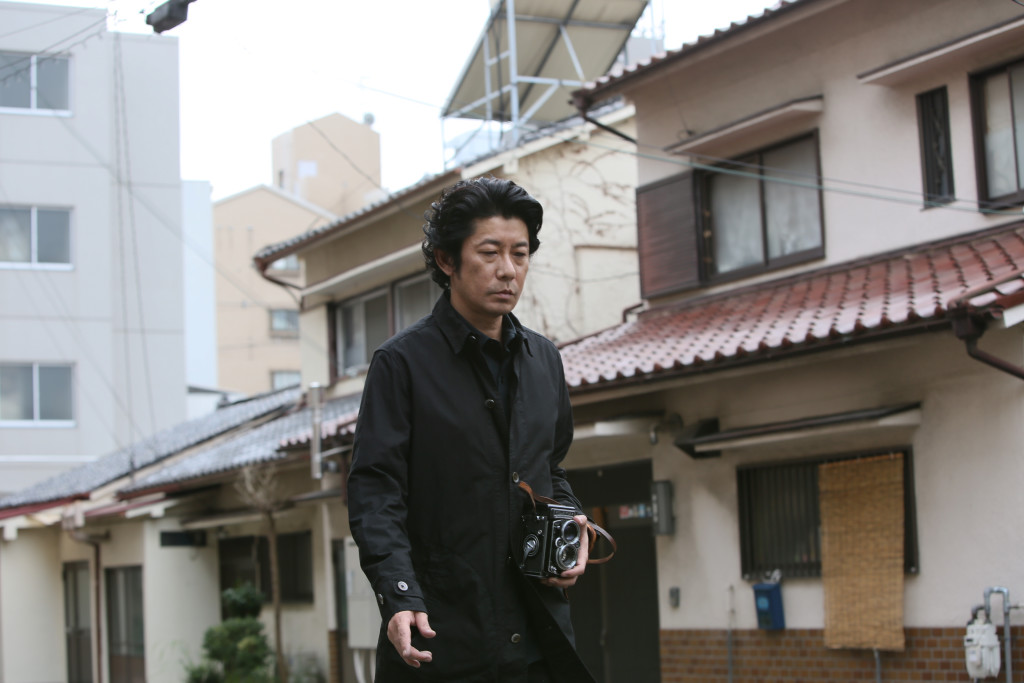In the U.S., the films of Japanese director Naomi Kawase have often been met with apprehension, not accorded the same respect as other celebrated works from the European film festival circuit. Perhaps this is because it’s hard to formulate an academic assessment of films that unabashedly invite intimacy: Kawase evokes sensuous experience more directly than, say, Claire Denis, who prefers to circumscribe her imagery with intellectual frameworks; and she attends to form less rigorously than Michael Haneke, who often uses his cinema explicitly as a means of ‘making a point.’ This isn’t to take away from the achievements of either of these festival darlings, but rather to indicate that Kawase occupies a place in a rather undefined middle: her style is sumptuous and atmospheric, casually but purposefully ordered, making it difficult to define her position with much exactitude. Comparison to Haneke in particular also allows us to identify a limitation of Kawase’s, which is that she never quite brings her films to a “point,” preferring to organize them around Big Themes or little stories. Kawase’s approach too often results in vagueness; her films are, one might say, soft around the edges.
Kawase’s films over the last decade have, frequently, suffered from regrettable structural issues, making it that much harder to overlook the wispiness of her style. One of her strongest this decade, 2011’s Hanezu, is an odd film that has a little bit of everything that she does in it: It is foremost an allegorical story about the forces of change in the world, one with the somewhat unconvincing narrative of a love-triangle, and bookended by documentary footage from the excavated ruins of the first capital of Japan. The title translates to “crimson,” and blood is a motif present in many of the movie’s most daring moments, from an unexpected cut to red dye early on, to a shock-cut, at the end, showing a bloodied man in a bathtub. This violence folds into the melodramatic arc of Hanezu, which is itself initially obscured by the documentary ambience of the film’s early scenes, and which surfaces when Kawase forsakes all pretenses of gradual narrative development, favoring a direct expression of emotion.
In 2014’s Still the Water, Kawase takes this emotionality even further. Although one instinctively knows that the film involves characters caught up in a story, it’s hard to describe the substantive qualities of said characters or said story — the entire film is ambience, metaphysical searching, even pure sensation. Still the Water is not unlike the contemporary works of Terrence Malick, another accomplished director of big themes who has, of late, been experimenting with a minimalist construction juxtaposed against maximal expressiveness. However, two of Kawase’s other recent films, 2016’s Sweet Bean and this year’s release, Radiance (which actually played at Cannes in 2017), show that Kawase’s been mulling this contradiction. And though it’s apparent that she’s not going to return to a more restrained style, preferring now to mine rockier emotional terrain, she is showing an effort to tether her films to the real world. Sweet Bean, for instance, presents itself amiably enough, but it’s really an issues-doc in disguise, using a food-porn-lite scenario to guide us into an empathetic look at a community of aging lepers.
Radiance, on the other hand — a rather striking romance between an almost-blind photographer (Masatoshi Nagase) and an ingenue movie narrator for the vision impaired (Misako Ozaki) — is, at least in its first half, the most successful film that Kawase has made this decade. Here, we see Kawase working to characterize and develop her leads in ways that allow us to vicariously engage with the film’s office environment, where blind volunteers critique Ozaki’s approach to narration. In its combination of documentation, narrative, and emotional expression (as contained in the film-within-a-film, itself reminiscent of something like Still the Water), Radiance, at first, gives the impression that Kawase has precisely alchemized the stylistic elements of her previous films. Eventually, though, script issues obstruct coherence, especially as pertaining to the love story; psychology goes out the window, and it’s hard to make sense of the central relationship.
That said, there’s still plenty of cause to be optimistic about future work from the director of 1997’s Suzaku and 2003’s Shara. Kawase has never lost her keen sense of space, her respect for nature, nor her deep love of community and togetherness, and while her films over the last decade have become harder to navigate, moments of lilting beauty still always seem to surface. She’s also busier now than ever, as the de facto national filmmaker of Japan — and as the artist tapped to make the official Olympic film of 2020. It is a jarring thought indeed that the person now filling that major role should be someone that I, as well as others, have long regarded as a director of “home movies” (to use a term of Yasujiro Ozu’s), a purveyor of a cinema close enough to touch.
You can stream Naomi Kawase’s Radiance on Amazon Prime. You can also stream 2016’s Sweet Bean on Kanopy.








